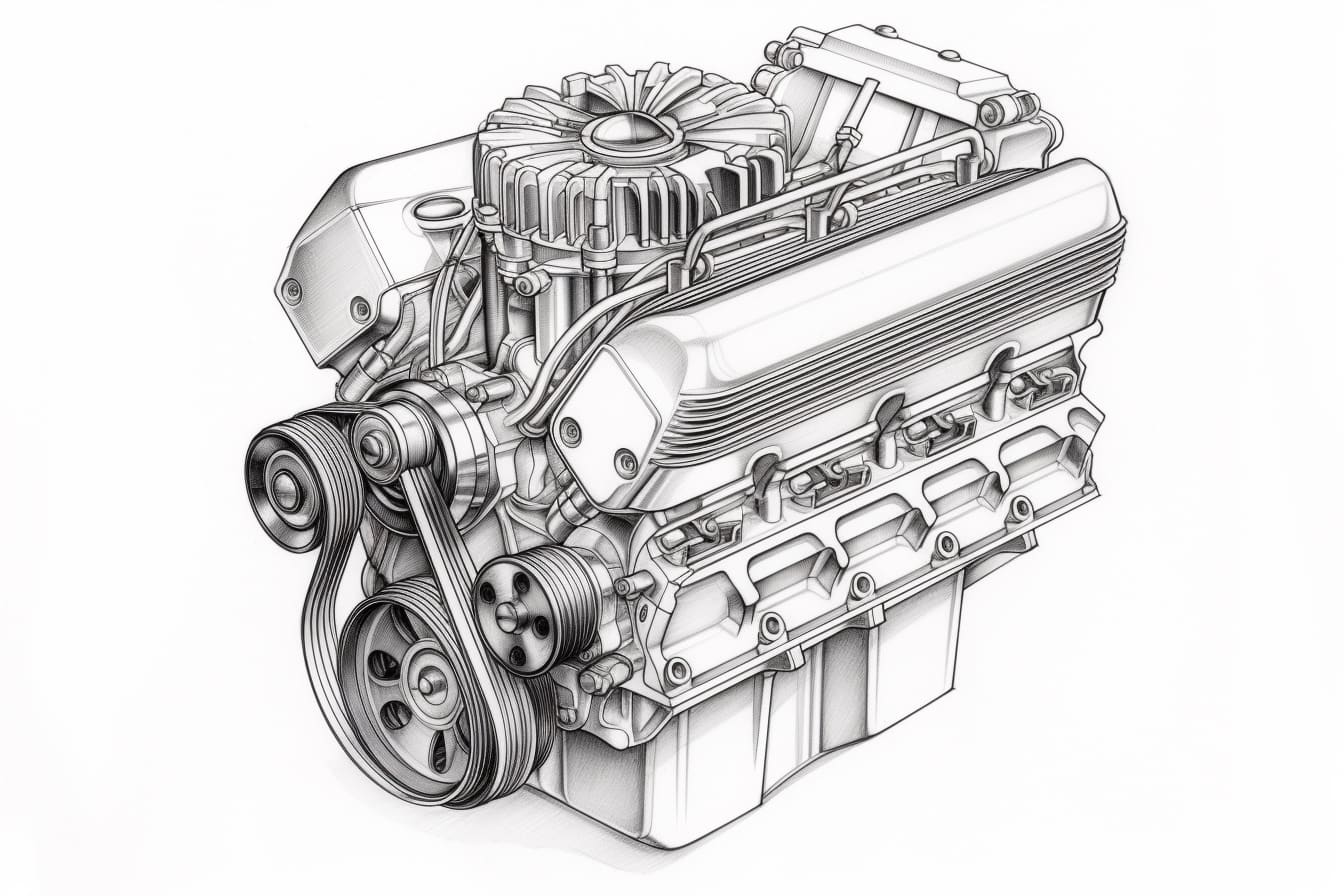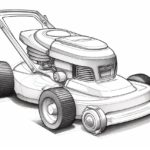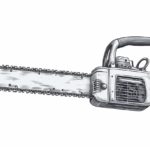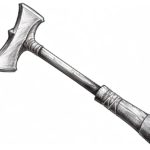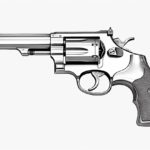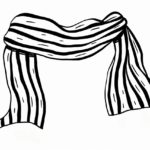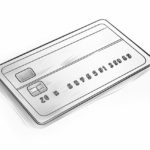Welcome to the exciting world of drawing engines! As an art instructor, I am thrilled to guide you through the process of creating dynamic and detailed engine illustrations. Engines are not only fascinating pieces of machinery, but they also offer a unique challenge for artists seeking to capture their intricate designs and mechanisms on paper. In this tutorial, we will explore the fundamental principles of drawing engines, from understanding perspective and proportions to mastering shading and texture. Whether you are a beginner looking to improve your drawing skills or an experienced artist eager to tackle a new subject matter, drawing engines is a rewarding and fulfilling endeavor that will sharpen your observational skills and unleash your creativity. So, grab your pencils and let’s dive into the captivating world of drawing engines together!
Materials Required
To draw an engine, you will need the following materials:
- Drawing paper or sketchbook
- Pencils (graphite pencils of various hardness for shading and detailing)
- Eraser (preferably a kneaded eraser for precise erasing)
- Ruler (for straight lines and measurements)
- Compass (for drawing circles and curves)
- Fine tip pens or markers (for outlining and detailing)
- Reference image of an engine (optional but helpful for accuracy)
These materials will help you create a detailed and accurate drawing of an engine.
How to Draw an Engine: a Step-by-step Guide
Step 1: Start with Basic Shapes
Begin by drawing a large rectangle for the main body of the engine. Add two smaller rectangles on top of the main rectangle, one for the cylinder head and one for the oil pan. Draw a circle at the front of the main rectangle for the crankshaft.
Step 2: Add Details to the Cylinder Head
Within the small rectangle representing the cylinder head, draw the intake and exhaust valves by sketching small circles. Add a spark plug at the top of the cylinder head with a small rectangle attached to represent the ignition wire.
Step 3: Outline the Piston and Connecting Rod
Inside the main rectangle, draw a vertical oval shape for the piston. Connect the piston to the crankshaft with a diagonal line to represent the connecting rod.
Step 4: Include the Crankshaft and Camshaft
Add detail to the crankshaft by drawing a series of circles along the circle you initially sketched. Connect these circles with lines to represent the crankshaft. Include the camshaft by drawing a series of lobes on another circle inside the engine block.
Step 5: Draw the Fuel and Air Intake System
Sketch a fuel injector near the intake valve and a throttle body connected to the intake manifold. Include an air filter and intake pipe leading to the intake manifold.
Step 6: Add Cooling System Components
Incorporate a radiator at the front of the engine with hoses connecting it to the engine block. Draw a water pump on one side of the engine block and include a thermostat near the radiator.
Step 7: Finalize Details and Shadows
Refine your drawing by adding small details like bolts, hoses, and wires throughout the engine. Use shading to create depth and dimension, paying attention to light sources to add shadows realistically.
Step 8: Review and Refine
Take a step back to review your drawing and make any necessary adjustments. Refine details, add texture, and adjust proportions as needed to enhance the overall appearance of your engine drawing.
Step 9: Optional – Add Color
If desired, you can add color to your drawing using colored pencils, markers, or digital tools to bring your engine illustration to life. Pay attention to details like metallic finishes and different textures to make your drawing more realistic.
Step 10: Practice and Experiment
Continue practicing drawing engines from different perspectives and angles to improve your skills. Experiment with different styles and techniques to develop your own unique approach to drawing engines.
Conclusion
In conclusion, drawing an engine requires attention to detail, precision, and a good understanding of the mechanical components involved. By breaking down the complex structure into manageable parts and practicing regularly, anyone can improve their skills in drawing engines. Remember to take your time, observe carefully, and enjoy the creative process as you bring this intricate machinery to life on paper. With dedication and patience, mastering the art of drawing engines can be a rewarding and fulfilling endeavor for aspiring artists and enthusiasts alike.
Fun Facts About Engines
- The first internal combustion engine was invented by Samuel Morse in 1826, which was a far cry from the powerful engines we have today.
- The Bugatti Chiron, one of the fastest cars in the world, has an engine that can produce over 1,500 horsepower, allowing it to reach speeds of over 260 mph.
- The W16 engine found in the Bugatti Veyron and Chiron is actually made up of two V8 engines fused together in a “W” shape, hence the name W16.
- The largest engine ever built is the Wärtsilä-Sulzer RTA96-C, used in container ships. This massive engine stands over 44 feet tall and can produce a mind-boggling 108,920 horsepower.
- The world’s smallest production engine is the 0.03 horsepower engine found in the Smallest Engine in the World model kit, which is small enough to fit on a fingertip.
- The first successful steam engine was developed by Thomas Newcomen in 1712. This engine was used to pump water out of mines and played a crucial role in the Industrial Revolution.
- The most common type of engine found in cars today is the four-stroke internal combustion engine, which operates on a cycle of intake, compression, power, and exhaust strokes.
- The first mass-produced car with an internal combustion engine was the Benz Patent-Motorwagen, invented by Karl Benz in 1885. This vehicle laid the foundation for modern automobiles.
- The term “horsepower” was coined by James Watt, the inventor of the steam engine, as a way to market the power of his engines by comparing them to the work done by horses.
- The rotary engine, also known as the Wankel engine, is a type of internal combustion engine that uses a unique rotary design instead of the traditional reciprocating pistons. This engine was famously used in Mazda’s RX-7 and RX-8 sports cars.
Suggestions for Scenes and Settings for Engine Drawings
Of course! Here are some specific suggestions for scenes and settings for drawings of an engine:
- Industrial Workshop: Show the engine placed on a workbench in a bustling industrial workshop with tools scattered around. Capture the gritty and raw atmosphere of the workspace.
- Vintage Car Restoration Garage: Place the engine in a vintage car restoration garage filled with classic cars and antique tools. Highlight the nostalgia and craftsmanship of restoring vintage vehicles.
- Sci-Fi Spaceship Engine Room: Imagine the engine as part of a futuristic spaceship engine room with intricate pipes, wires, and glowing lights. Create a sense of advanced technology and space exploration.
- Steam Punk Cityscape: Place the engine in a steam punk cityscape with towering gears, steam-powered machinery, and Victorian-era buildings. Combine elements of history and fantasy in this unique setting.
- Racing Pit Stop: Show the engine being worked on in a high-energy racing pit stop with mechanics rushing to make quick repairs. Capture the adrenaline and speed of a racing environment.
- Underwater Submarine Engine Room: Visualize the engine as part of an underwater submarine engine room with portholes, levers, and a deep-sea backdrop. Explore the mysteries of the ocean depths in this setting.
- Fantasy Airship Deck: Place the engine on a fantastical airship deck with billowing sails, fantastical creatures, and a vast sky backdrop. Combine elements of fantasy and adventure in this whimsical scene.
- Cyberpunk Cityscape: Imagine the engine in a cyberpunk cityscape with neon lights, holographic displays, and towering skyscrapers. Create a futuristic and gritty urban setting for the engine.
- Wild West Train Engine: Show the engine as part of a Wild West train engine with a dusty desert landscape, cacti, and a vintage train station in the background. Capture the rugged charm of the Old West in this scene.
- Space Station Engine Compartment: Visualize the engine in a futuristic space station engine compartment with zero gravity, floating tools, and a view of Earth in the distance. Explore the vastness of space in this setting.
I hope these suggestions inspire you to create diverse and engaging drawings of engines in various exciting settings!

